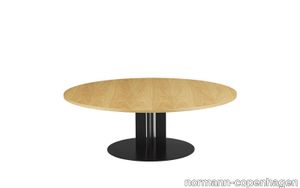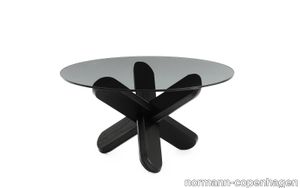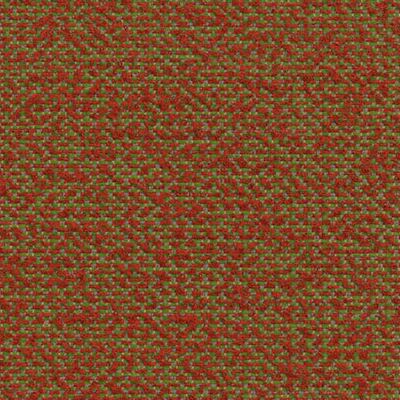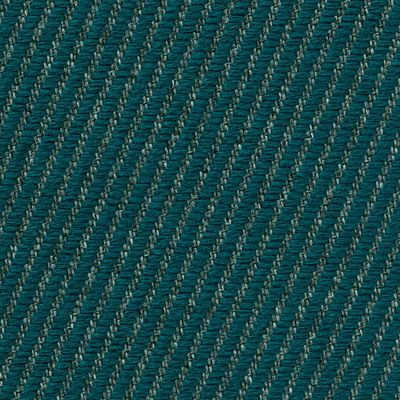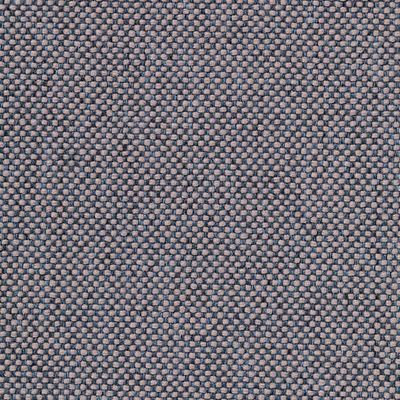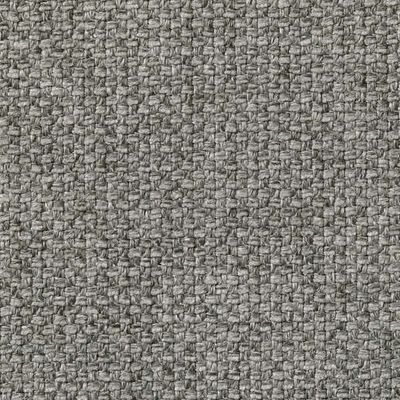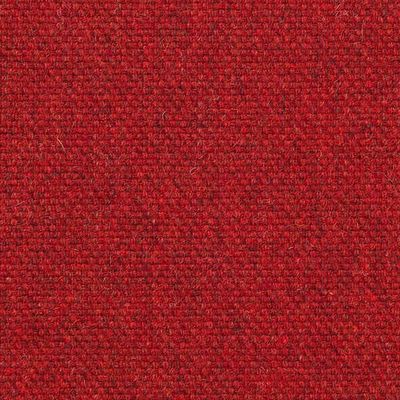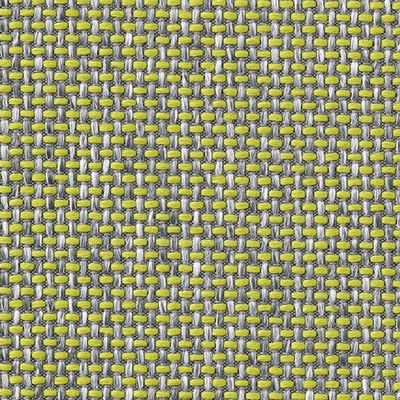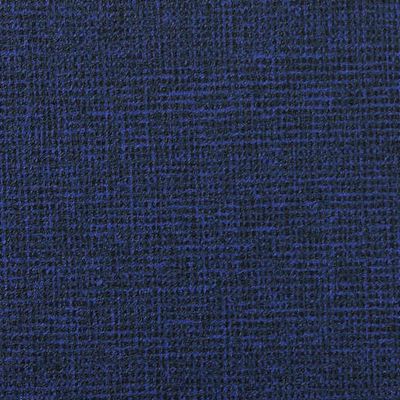Moebius - 2d files - 3d files
PRODUCT DESCRIPTION
Moebius is an elegant, curious and timeless classic.Made of a glass plate, supported by a base that unites three pieces of wood into a simple structure with a complex look, the coffee table immediately recalls the famous ribbon of the mathematician Moebius.With its rhythmic shapes, the Moebius table will suit a wide range of interiors. This table was discovered at a flea market in Parma, Italy. With this creation, this unknown creator leaves a trace of the artistic trail explored by designers from the fifties.The simplicity of the lines doesn't take anything away from this intriguing and complex 3 pieces assemblage and refers us directly to the Moebius ribbon created in 1858 by the German mathematician August Ferdinand Moebius, ribbon with no end portrayed numerous timesin Escher's work. An incredible find whose mathematical form evokes many reflections on infinity and renewal.Reminiscence of the past, the Moebius table is a classical. It blends rhythmic forms and an evident practicality.
SUPPLIER: OBJEKTO
TYPE: FURNITURE

OTHER SUPPLIERS
A wide range of product from near to 3,000 suppliers around the world.






Other Products From This Supplier
A wide range of product from furniture to finishes to meet the desire of all designers.
Eclipse

objekto > Floor lamp
A fascinating lamp, design icon since it introduced the permanent collection of the MoMa of New York. The Eclipse lamp simplicity and cleverness are amazing. You can change both its shape and its inclination to make it unique. Eclipse is great is any interior design style. A must-have lamp. A scheming and attractive lamp. Manufactured from a single plastic band rolled up on it, the structure can be manipulated to change the form and the orientation of the light. The metal arches are equipped with small plastic parts making possible to uphold the lamp in various positions. The Eclipse lamp is delivered in a flat pack, similar to a “pizza box”. ”I believe that the work of a designer must be good quality, beautiful and affordable. With the Eclipse lamp I overcame the trauma of expensive design. I want design pieces to be popular.”Mauricio Klabin. Since 2006 the Eclipse lamp has been part of the permanent collection of the Museum of Modern Art of New York (MoMA).
Moebius
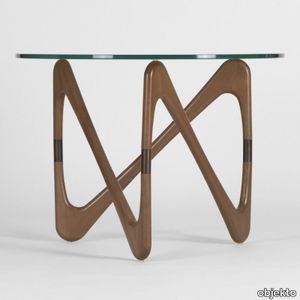
objekto > Coffee table
Moebius is an elegant, curious and timeless classic.Made of a glass plate, supported by a base that unites three pieces of wood into a simple structure with a complex look, the coffee table immediately recalls the famous ribbon of the mathematician Moebius.With its rhythmic shapes, the Moebius table will suit a wide range of interiors. This table was discovered at a flea market in Parma, Italy. With this creation, this unknown creator leaves a trace of the artistic trail explored by designers from the fifties.The simplicity of the lines doesn't take anything away from this intriguing and complex 3 pieces assemblage and refers us directly to the Moebius ribbon created in 1858 by the German mathematician August Ferdinand Moebius, ribbon with no end portrayed numerous timesin Escher's work. An incredible find whose mathematical form evokes many reflections on infinity and renewal.Reminiscence of the past, the Moebius table is a classical. It blends rhythmic forms and an evident practicality.
Moça

objekto > Coffee table
Elegant, the Moça side table is a born of the hand of Pedro Paulo Venzon. Entirely made of steel, it surprises with its light design with feminine curves, its feet in the shape of an arch reminding the skirts and dresses with crinolines.Around the modern Brazilian and contemporary design, the steel coffee table Moça will be perfect to accompany a sofa or an armchair, its timeless design and its changing silhouette make it an essential piece for your interior. Pedro Paulo Venzon is a young and promising designer whose singular work around Brazilian modern design has been awarded many times in Brazil and abroad. The Moça side table is his first creation to be licensed. It combines the rigidity of steel and the lightness of this changing silhouette made of simple and feminine curves.
Kaeko
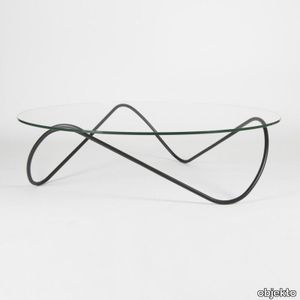
objekto > Coffee table
The Kaeko coffee table, designed by Brazilian graphic designer and architect Rafic Farah, is a simple yet sophisticated piece. Inspired by his fascination for women, Farah gave his Kaeko table stylish and sensual wavy lines. Rafic Farah started to take an interest in the design of objects after taken care of the Doctor Kaeko's cabinet fitment. He decides then to continue designing and manufacturing objects and furniture for his clients and friends: lamps and this coffee table in 1989.Doctor Kaeco is a half-blood Japanese woman, tall with deep black hair. She is characterized by her natural elegance, her optimism and her determination. The graphic structures of these objects are maybe the reflection of her sophisticated and refined appearance: a Chinese ink on a rice paperThe Kaeko coffee table is a perfect illustration of Rafic Farah conception of design: simple and sophisticated at the same time.
Quattro Cantoni
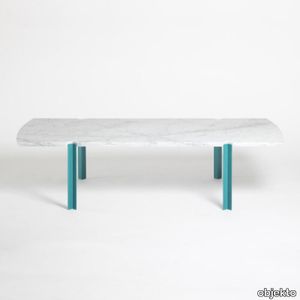
objekto > Coffee table
The Quattro Cantoni coffee table, designed by Giulio Lazzotti, is a modern and elegant coffee table.With strong inspirations, it highlights an exceptional slab of Carrara marble from Italy, the rare Bianco Fiorito.Presented in two variations, this prestigious rock will highlight its magnificent flowery veins or its mineral aspect, depending on your tastes, with its polished or brushed matte finish.This coffee table will be perfect in a tastefully furnished living room. Inspired by the book "Il gioco dei quattro cantoni", written by Gianni Rodari and illustrated by Bruno Munari, Giulio Lazzotti created this coffee table."Quattro Cantoni" refers to the traditional children's game that involves five participants running from one corner to the other of a square without losing their place. The marble top is their land, the four feet are the children playing, or those running trees in Rodari's tale.
Tipi
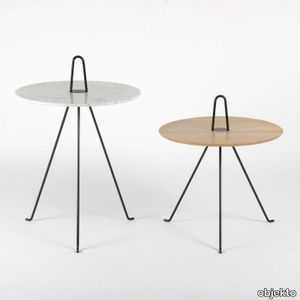
objekto > Side table
Tipi is a very practical side table created by the studio Fournier+Endrizzi studio. Its design goes everywhere with its nomadic aspect. Tipi is easy to move thanks to its visible handle and its interchangeable top allows for easy cleaning.Available in two sizes and with different tops, the Tipi side table will follow you everywhere in your home. Tipi is a nomadic side table, playful and precise, designed by Fournier+Endrizzi studio. Its lightness and comfortable handle allows you to bring it along your daily moves. As a bedside table, a coffee table, nearby a sofa or on a terrasse, Tipi suits well in private homes as well as more public spaces.
Gaivota

objekto > Chair
The curved forms of the Gaivota rocking chair were defined by Reno Bonzon, as he was sat in deep snow during a stay in the Alps and had a look at his bodyprint after standing up. Keeping ergonomics in mind, Reno wanted to reproduce this comfortable shape. The emblematic part of the work of Reno Bonzon is certainly the rocking chair "Gaivota", probably the most rewarded creation in Brazil, combining at the same time aestheticism and ergonomy. Both Museum of the Brazilian House Prize and Movesp Prize winner in 1988, this creation was selected in 1990 to represent Brazil at the Biennial of Design in São Paulo.The curved forms of both seat and back were defined by Reno Bonzon, as he was sat in deep snow during a stay in French Alps and had a look at his body print after standing up. Keeping ergonomy in mind, Reno wanted to reproduce this comfortable form. He paid a special attention to both dimensions and balance making this rocking chair very comfortable whatever the size of the person may be.The Jury of the Museum of the Brazilian House Prize particularly underlined "the principle of manufacturing giving the product its great lightness" as well as "the aesthetic qualities combined with the ergonomic factor". For the sake of environment he chose the plywood manufacturing process in order to give value to wood trimmings. Furthermore this process allowing the creation of large curves, Reno took advantage of this property to introduce the movement in his creationThe design of the rocking chair, its sinuous curves, irrevocably reminds the movement even statically represented on a picture. Elegance and comfort characterize the Gaivota.
Peglev - Rocking Chair

objekto > Chair
With a simple and modern elegance, the Peglev rocking chair is a creation of the designer Michel Arnoult, one of the precursors of dismountable furniture. In declination of the model with feet, this rocking chair keeps its shape and its comfort.The pieces of full grain vegetable leather stretched over a beautiful and resistant solid wood structure give this rocking chair an iconic and singular silhouette.Very comfortable, this timeless armchair will take its place in any interior. Created in 1968 by the French designer Michel Arnoult, one of the fathers of the Ready-To-Assemble furniture (RTA) and the flat packaging in the Fifties, the Peg-Lev armchair, literally "I take and I carry", is one of the premises of the current Cash & Carry. This designer who always ardently defended the democratization of design at the expense of any creative vanity focused on flat-pack making possible the customers to carry easily their furniture, revolutionary approach for that time.The stylishness underlined by both simple and modern lines, the use of noble materials, the great care paid to the manufacturing and finishing processes, bring this iconic and very comfortable creation a timeless touch. Whatever the version you will choose, armchair or rocking chair, you always will appreciate this singular piece that will ever be in fashion. A piece that will pass through the generations.
Peglev - Fauteuil

objekto > Chair
With a simple and modern elegance, the Peglev leather and solid wood armchair is a creation of the designer Michel Arnoult, one of the precursors of dismountable furniture. Iconic, the Peglev is made of simple shapes and curves in high quality materials.The full grain vegetable leather pieces stretched over a beautiful and resistant solid wood structure give this armchair an iconic and singular silhouette.Very comfortable, this timeless armchair will take its place in any interior. Created in 1968 by the French designer Michel Arnoult, one of the fathers of the Ready-To-Assemble furniture (RTA) and the flat packaging in the Fifties, the Peg-Lev armchair, literally "I take and I carry", is one of the premises of the current Cash & Carry. This designer who always ardently defended the democratization of design at the expense of any creative vanity focused on flat-pack making possible the customers to carry easily their furniture, revolutionary approach for that time.The stylishness underlined by both simple and modern lines, the use of noble materials, the great care paid to the manufacturing and finishing processes, bring this iconic and very comfortable creation a timeless touch. Whatever the version you will choose, armchair or rocking chair, you always will appreciate this singular piece that will ever be in fashion. A piece that will pass through the generations.
PMR
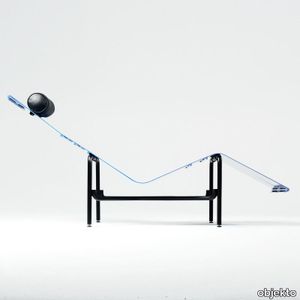
objekto > Chair
Made entirely of steel, the PMR indoor lounge chair is a work created by modernist architect Paulo Mendes da Rocha. " In the middle of the 80’s I visited the spring manufacturer Indústrias de Molas Sueden in São Paulo. A powerful factory of cold bended steel springs bound as well to locomotive as to delicate motor mechanisms. There I saw 25 cm wide steel coils as thin as a paper sheet. I immediately thought of the idea of a human body stretched out on this thin flexible sheet like floating over the ground (Henry Moore!?). To reach the width I needed I put together two sheets while leaving an empty and longitudinal space between these in order to release the spinal column and to allow the body to relax on the muscles. This space also enabled me to fix a small cylindrical cushion for the neck. The transverse bars, which link the two steel sheets, were strategically distributed all over the length of seat in order to enable three different inclinations. I did not make any particular research to achieve it. This idea was born from the continuation of the Paulistano armchair concept. An idea focused on steel flexibility properties." Paulo Mendes da Rocha - December 2009
Tribo de bar

objekto > Stool
A remarkable comfort, a pure line, declined in a stackable bar stool: the Tribo, created by Ilse Lang is a model of its kind.Practical and versatile, this curved solid wood seat can be placed near a counter or a bar. Aesthetically pleasing even when stored, it will accompany your home all year round. Pieces of furniture created by Ilse Lang are particularly noteworthy in the way that they always combine aestheticism and function. Tribo stool is surely one of the most beautiful examples. The slots distributed all around the circumference of this very comfortable round and widened seat give to this creation a very contemporary character. These slots also enable to stack the stools the ones on the others. A shape linked with a specific use: here stacking. To design this creation, Ilse Lang took as a starting point the traditional wooden stools used by the “gauchos” - southern Brazilian cowboys - as they gathered together around campfires while drinking maté.A great comfort, a pure design, either table or bar model: Tribo is the stool you will love.
Tribo

objekto > Stool
Clean lines, remarkable comfort, Tribo is a practical and versatile low stacking stool. Created by Ilse Lang, it is the perfect result of aesthetic and efficient design.Available in two sizes, this version will be perfect to welcome guests at a table or coffee table without taking up space when storing. Pieces of furniture created by Ilse Lang are particularly noteworthy in the way that they always combine aestheticism and function. Tribo stool is surely one of the most beautiful examples. The slots distributed all around the circumference of this very comfortable round and widened seat give to this creation a very contemporary character. These slots also enable to stack the stools the ones on the others. A shape linked with a specific use: here stacking. To design this creation, Ilse Lang took as a starting point the traditional wooden stools used by the “gauchos” - southern Brazilian cowboys - as they gathered together around campfires while drinking maté.A great comfort, a pure design, either table or bar model: Tribo is the stool you will love.
FDC1

objekto > Chair
The FDC1 armchair is an exclusive and rare piece of furniture designed by artist Flavio de Carvalho in the 50s. This sculptural tribal lounge chair is one of designer’s masterpieces, deemed by Le Corbusier as a “romantic revolutionary”. Deemed by Le Corbusier as a "romantic revolutionary", Flávio de Carvalho was a man of many skills who got involved in an innovative and provocative way in many artistic fields and particularly in design and architecture areas.His concepts of design and architecture are moved principally by the imagination and correspond to the new forms of living and thinking. For this man recognized today as one of the Brazilian modern architecture precursors, interior design is as important as architecture. Within the framework of his main project, the Capuava ranch (1939), he designed most of its furniture, among them the famous FDC1 armchair created in the 50’s.The shape of this armchair is impressive by its graphic and sculptural aspects. Tribal mask or wink to sadomasochism, this noteworthy piece was at that time very avant-gardist and remains very modern.
Gabi
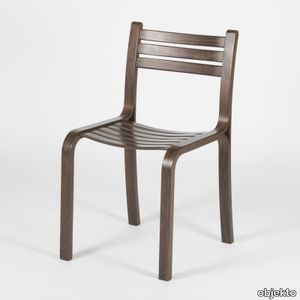
objekto > Chair
A key feature of the Reno Bonzon's Gabi is to combine only two parts: sides and crosspieces. Unlike many chairs, these crosspieces themselves constitute both seat and back and structure the whole frame. The triangle formed by the junction of the three plywood side stripes give elegance and character to this light, stackable and very resistant "bistrot" chair. Excited by the success of his Gaivota rocking chair, Renaud Bonzon take up, in 1990, the challenge of any furniture designer: to create a chair that is both beautiful, of high quality and affordable.The plywood technique he was exploring at the time fascinated him. This technique enabled him to use a minimum quantity of material while creating comfortable curves. He chose that way to create his first chair.A key feature of this chair is to be composed of only two elements: side and crosspiece. Unlike many chairs, these crosspieces themselves constitute both seat and back and structure the whole frame. Another remarkable feature that brings both elegance and character to this chair is the triangle formed by the junction of three plywood stripes that constitute the side of the chair. A stripe for the back leg and the back forming a slight curve, another one for the back, the seat and the front leg, which forms an "S" and the last one for the back leg, the seat and the front leg forming a "U". Besides the originality of this assembly, it also provides flexibility to the chair. Although this is not recommended, it is difficult to resist the urge to swing on the back legs. In this case, it creates a great tension at the junction of back leg / seat / back that is mostly absorbed by the triangle which will slightly deform without losing strength.In 1990, year of its creation, the Gabi chair won two prestigious design awards in Brazil, the MOVESP prize and the one of the Museo da Casa Brasileira. At the same time comfortable and elegant in its composition it is also lightweight, stackable and very resistant. Renaud Bonzon used it for many years in his Cassis restaurant in Sao Paulo.
Bienal

objekto > Stool
A leather bar or counter stool by the hand of the famous Fernando Jaeger. Referring to the Brazilian design of the 50's, Bienal features clean, sharp lines and curves.Its curved seat in full grain leather combined with legs available in different sizes to suit a bar or counter define it as a practical and comfortable object. Designed by Brazilian designer Fernando Jaeger, these bar and counter-height stools bring a satisfying curve to a wide seat that generously padded for lasting comfort. The Bienal stool is suitable for residential and commercial use.
Lagoa
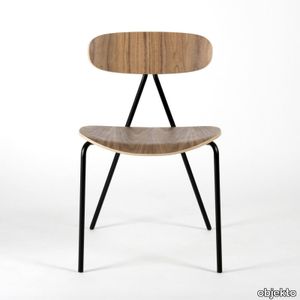
objekto > Chair
A stacking chair signed by the hand of Magnus Long, a designer of many awards. With its typical industrial design, Lagoa is a classic and timeless chair. Designed by Magnus Long, Lagoa is a low-stacking dining chair for cafés, restaurants and domestic interiors. Its form is inspired by the liquid lines of Rio de Janeiro and takes its name from the Lagoa (lagoon) district of the city. The fluid forms of the polished plywood parts are combined with a light steel structure to create a clean silhouette, with the backrest seemingly floating on the apex of a triangular frame with flared, cut-off. The chair is the outcome of a brief set by French brand Objekto to create a simple and beautiful chair that fits their values of visual purity combined with Magnus Long’s own interest in elegant engineering. Combining two simple and modern materials, Lagoa chair is an exercise in restraint whilst remaining expressive. Available in walnut, stained and natural oak.
CV Model H

objekto > Chair
Recognizable by their singular style and admirable by the perfection of their realization, the furniture of the Cristian Valdés collection has become references and cult objects highly sought after by connoisseurs and lovers of design. 3rd creation of this collection, the H armchair naturally complements the first two chairs. More generous in size, it uses the construction method common to the entire range but changes its configuration to position the wooden parts in front and behind and not on the sides. Its soft curves make it a very comfortable and elegant seat, the natural leather of which will take on a magnificent patina over time. A truly magnificent piece. Alongside his main activity, the Chilean architect Cristian Valdés dabbled in furniture design. For him, the only fundamental difference between design and architecture is a question of scale. The collection of furniture he creates is the concrete result of the intersection of these two worlds. The idea came to him after analyzing the structure and construction of a Dunlop tennis racket similar to the one John McEnroe played with at the time. He develops a constructive system which is the functional and structural translation. This system will be used for all the furniture in the collection. 3rd creation of this collection, the H armchair naturally complements the first two chairs. More generous in size, it uses the construction method common to the entire range but changes its configuration to position the wooden parts in front and behind and not on the sides. Its soft curves make it a very comfortable and elegant seat, the natural leather of which will take on a magnificent patina over time. A truly magnificent piece. Like the A and B chairs, the H armchair quickly became a design icon in its country. He is appreciated and recognized for his unusual style. Handcrafted in small series, Cristian Valdés furniture is today unique, rare and sought after objects.
CV Model A
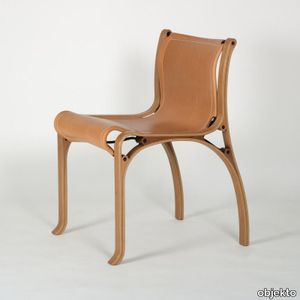
objekto > Chair
Recognizable by their singular style and admirable by the perfection of their realization, the furniture of the Cristian Valdés collection has become references and cult objects highly sought after by connoisseurs and lovers of design. The first of his creations, the Valdés chair is remarkable for its construction method which will serve as the basis for the entire collection. Its soft curves make it a very comfortable and elegant seat, the natural leather of which will take on a magnificent patina over time. Alongside his main activity, the Chilean architect Cristian Valdés dabbled in furniture design. For him, the only fundamental difference between design and architecture is a question of scale. The collection of furniture that he then created is the concrete result of the intersection of these two worlds. In 1977, he gave birth to the Valdés Model A. The idea came to him after analyzing the structure and construction method of a Dunlop tennis racquet similar to the one John McEnroe played with at the time. This chair is the functional and structural translation. It is remarkable for its constructive mode and its soft curves which make it a very comfortable and elegant seat whose natural leather will take on a magnificent patina over time. The Valdés chair quickly became a design icon in its country. She is appreciated and recognized for her unusual style. Handcrafted in small series, Cristian Valdés furniture is today unique, rare and sought after objects.
CV Model B

objekto > Chair
Recognizable by their singular style and admirable by the perfection of their realization, Cristian Valdés furniture has become references and cult objects highly sought after by connoisseurs and lovers of design. This chair with armrests is the natural variation of the original chair. Like her, she adopts the same construction method common to the entire collection. Its soft curves make it a very comfortable and elegant seat, the natural leather of which will take on a magnificent patina over time. Alongside his main activity, the Chilean architect Cristian Valdés dabbled in furniture design. For him, the only fundamental difference between design and architecture is a question of scale. The collection of furniture he creates is the concrete result of the intersection of these two worlds. The idea came to him after analyzing the structure and construction of a Dunlop tennis racket similar to the one John McEnroe played with at the time. He develops a constructive system which is the functional and structural translation. This system will be used for all the furniture in the collection. This chair with armrests is the natural variation of the original chair. Its soft curves make it a very comfortable and elegant seat, the natural leather of which will take on a magnificent patina over time. Like the original chair, this model quickly became a design icon in its country. He is appreciated and recognized for his unusual style. Handcrafted in small series, Cristian Valdés furniture is today unique, rare and sought after objects.
Replacement cover Sunbrella
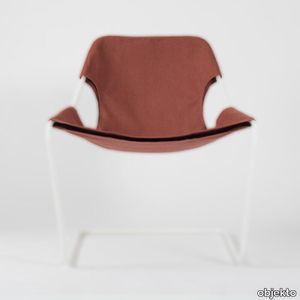
objekto > Chair
An additional cover in Sunbrella Heritage canvas that will replace the fabric or leather cover of your Paulistano armchair. In seconds, opt for a different look or a more breathable material for the season.Our 3i treated weather resistant fabric cover fits all Paulistano models in one simple motion for indoor and outdoor use. If your Paulistano needs a new look, change its cover. Our Sunbrella Heritage canvas piece is available in a variety of sober and bright colors.The change is done in seconds.Remove your old cover by gently pulling it from the top, then slip on the new fabric cover in reverse.
Replacement cover canvas
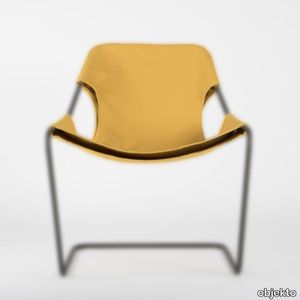
objekto > Chair
An additional cover in cotton canvas from the Vosges region that will replace the fabric or leather cover of your Paulistano armchair. In seconds, opt for a different look or a more breathable material for the season.Our 3i treated weather resistant fabric cover fits all Paulistano models in one simple motion for indoor and outdoor use. If your Paulistano needs a new look, change its cover. Our Vosges canvas piece is available in a variety of sober and bright colors.The change is done in seconds.Remove your old cover by gently pulling it from the top, then slip on the new fabric cover in reverse.
Leather Replacement cover

objekto > Chair
An additional cover in full grain vegetable leather that will replace the fabric or leather cover of your Paulistano armchair. In a few seconds, opt for a different look or a soft and comfortable material for the season.Our leather cover adapts to all Paulistano models in a simple movement for indoor use. If your Paulistano needs a new look, change its cover. Our full grain vegetable leather piece is available in a variety of colors.The change is done in seconds.Remove your old cover by gently pulling it from the top, then slip on the new leather piece by following the reverse procedure.
Paulistano - Outdoor Sunbrella

objekto > Chair
A cult and colorful armchair signed by the hand of Paulo Mendes da Rocha in its version adapted for outdoor use. Very comfortable, the Paulistano is a design classic with a timeless elegance. Made of spring steel, the chair is coated with an extremely durable epoxy paint for intensive outdoor use, and covered with a 3i treated outdoor canvas (rot-proof, stain-proof and waterproof) available in a wide choice of colors.On a terrace, by the pool or under a pergola, this armchair will adapt for a long time to all situations. Designed in 1957 by Paulo Mendes da Rocha, the Paulistano armchair was part, for many years, of the living rooms of the Athletic Club of São Paulo. The constructivist concept of the structure, made up from a single bended steel bar, and its cover, made up of leather or canvas, procure to this armchair an esthetical lightness and an incomparable comfort. Edited in small series within the last years, the Paulistano armchair emerges from the past to show that the purity and the elegance of its lines are timeless: a masterpiece. The Paulistano lounge chair has been included in the famous permanent collection of the Museum of Modern Art of New York (MoMA)
Paulistano tissus

objekto > Chair
A cult armchair signed by the hand of Paulo Mendes da Rocha, declined in colored fabric. Very comfortable, the Paulistano is a design classic with a timeless elegance.The spring steel frame, presented in its original finish of phosphated carbon steel, polished stainless steel, or coated with an extremely durable epoxy paint, is covered with a genuine cotton canvas available in a wide range of colors.Placed in a living room, a bedroom or a veranda, this armchair will adapt to any atmosphere. Designed in 1957 by Paulo Mendes da Rocha, the Paulistano armchair was part, for many years, of the living rooms of the Athletic Club of São Paulo. The constructivist concept of the structure, made up from a single bended steel bar, and its cover, made up of leather or cotton, procure to this armchair an esthetical lightness and an incomparable comfort. Edited in small series within the last years, the Paulistano armchair emerges from the past to show that the purity and the elegance of its lines are timeless: a masterpiece. The Paulistano lounge chair has been included in the famous permanent collection of the Museum of Modern Art of New York (MoMA)
Paulistano Mesh
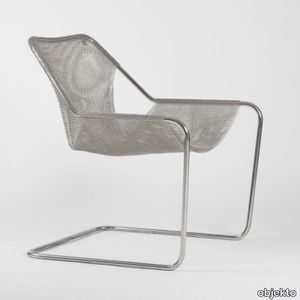
objekto > Chair
A cult chair signed by Paulo Mendes da Rocha, one of the great masters of architecture, declined in a Mesh version, all steel. Very comfortable, the Paulistano is a design classic with a timeless elegance.This 100% stainless steel version retains the flexibility and suppleness of the original chair, with the metal mesh replacing leather or textile.The Paulistano Mesh will bring a unique touch of originality to your home. Designed in 1957 by Paulo Mendes da Rocha, the Paulistano armchair was part, for many years, of the living rooms of the Athletic Club of São Paulo. The constructivist concept of the structure, made up from a single bended steel bar, and its cover, made up of leather or cotton, procure to this armchair an esthetical lightness and an incomparable comfort. Edited in small series within the last years, the Paulistano armchair emerges from the past to show that the purity and the elegance of its lines are timeless: a masterpiece. The Paulistano lounge chair has been included in the famous permanent collection of the Museum of Modern Art of New York (MoMA)
Paulistano OC
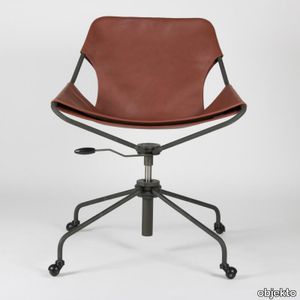
objekto > Chair
The Paulistano OC leather office chair is a rolling variation of the original Paulo Mendes da Rocha chair. Keeping its mythical and timeless design, it is covered with its full grain leather cover and a steel structure.This office chair will take a beautiful patina over time. Designed in 1985 within the Brazilian creative group Nucleon 8, the Paulistano OC is the office evolution of the famous Paulistano chair designed by architect Paulo Mendes da Rocha which was part, for many years, of the living rooms of the Athletic Club of São Paulo. The constructivist concept of the structure, made up from a single bended steel bar, and its cover, made up of leather or cotton, procure to this armchair an esthetical lightness and an incomparable comfort. Edited in small series within the last years, the Paulistano armchair emerges from the past to show that the purity and the elegance of its lines are timeless: a masterpiece. The Paulistano lounge chair has been included in the famous permanent collection of the Museum of Modern Art of New York (MoMA)
Paulistano - leather

objekto > Chair
A cult leather armchair signed by the hand of architect Paulo Mendes da Rocha. Very comfortable, the Paulistano is a design classic with a timeless elegance.The spring steel frame, presented in its original phosphated carbon steel finish, polished stainless steel, or covered with an extremely durable epoxy paint, is covered with a sensual and deep piece of full grain vegetable leather. Placed in a living room, in a bedroom, this armchair with its minimalist lines will fit into any interior and will take on an extraordinary patina over time. Designed in 1957 by Paulo Mendes da Rocha, the Paulistano armchair was part, for many years, of the living rooms of the Athletic Club of São Paulo. The constructivist concept of the structure, made up from a single bended steel bar, and its cover, made up of leather or cotton, procure to this armchair an esthetical lightness and an incomparable comfort. Edited in small series within the last years, the Paulistano armchair emerges from the past to show that the purity and the elegance of its lines are timeless: a masterpiece. The Paulistano lounge chair has been included in the famous permanent collection of the Museum of Modern Art of New York (MoMA)
Recently Viewed Products
A wide range of product from furniture to finishes to meet the desire of all designers.
Highway
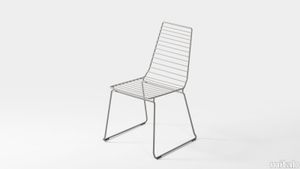
mitab > Chair
Form us with love Chair with frame in steel wire. Frame in standard RAL (black or white), Selected RAL or Anycolour RAL. Plastic feet with felt. Detachable seat pad from needled felt in white, beige, grey or antracite. Stackable.
Moebius

objekto > Coffee table
Moebius is an elegant, curious and timeless classic.Made of a glass plate, supported by a base that unites three pieces of wood into a simple structure with a complex look, the coffee table immediately recalls the famous ribbon of the mathematician Moebius.With its rhythmic shapes, the Moebius table will suit a wide range of interiors. This table was discovered at a flea market in Parma, Italy. With this creation, this unknown creator leaves a trace of the artistic trail explored by designers from the fifties.The simplicity of the lines doesn't take anything away from this intriguing and complex 3 pieces assemblage and refers us directly to the Moebius ribbon created in 1858 by the German mathematician August Ferdinand Moebius, ribbon with no end portrayed numerous timesin Escher's work. An incredible find whose mathematical form evokes many reflections on infinity and renewal.Reminiscence of the past, the Moebius table is a classical. It blends rhythmic forms and an evident practicality.
MONO BLUE - Oval wool rug _ GAN

GAN > Carpet
The **Crochet Collection** by Clara von Zweigbergk is a stunning series of wool rugs, available in four distinct variants. This collection seamlessly blends graphic design, illustration, and the art of knitting, showcasing Von Zweigbergk's creative vision. By experimenting with pattern resizing and vibrant wool color combinations, she has crafted a contemporary design where color and modular repetition highlight the endless possibilities of crochet. Each rug is composed of 100% wool, created using embroidery techniques, and features a weight of 3.5 kg/m² (0.72 lbs/ft²) with a thickness of 10 mm (0.4"). For added convenience, the 3D file of the product is available for download, allowing for seamless integration into design projects. The collection is supplied by **GAN**, a prestigious interior design brand founded in 1941, renowned for its innovative and high-quality rugs and textiles. Headquartered in Spain, GAN has built a global reputation for its contemporary designs, offering a diverse range of products that cater to various styles and budgets. Explore their collection at [www.gan-rugs.com](http://www.gan-rugs.com).
Recommended Products
A wide range of product from furniture to finishes to meet the desire of all designers.
Around Coffee Table
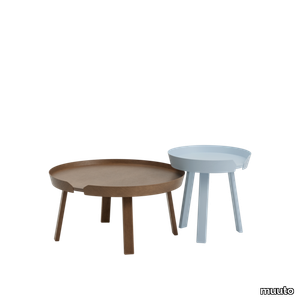
muuto > Coffee table
The Around Coffee Table brings a new perspective to its typology through the characterful wooden veneer frame that runs along the edge of the table, echoing the ideas of Scandinavian design. With its round shape and multiple sizes, the Around Coffee Table can be used in a multitude of settings, on its own or in groups, in any living room, lounge setting, lobby area or hotel room.
Elli
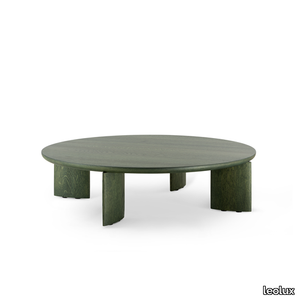
leolux > Coffee table
Looking for a gorgeous low coffee table to match a laid-back lounge interior? Elli is the perfect choice, beautifully crafted from high-quality oak.
Dice

leolux > Coffee table
The Dice coffee table is truly a design object. No compromise has been made in its design. Every detail is exactly as designers Studio Truly Truly intended. This creates a fascinating table that continues to surprise from every perspective.
Toveri
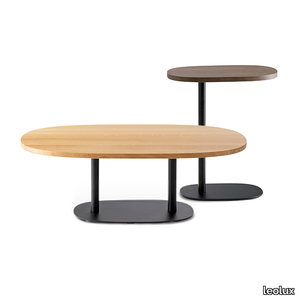
leolux > Coffee table
Toveri marries curves and hard materials to create a table series with soft shapes and striking features. The link between the top and the base has been moved to the centre of the tables, so the table top appears to float. The symmetry of the two elements makes the base seem like a shadow of the top.
Iduna
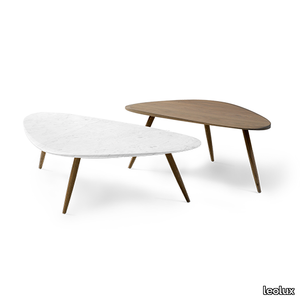
leolux > Coffee table
Natural shapes and materials bring tranquillity to your living space because they exude softness and quality. It's the first thing you notice about Iduna coffee tables. The tapered wooden legs support a marble or solid oak top - large or small, in a high or low version for the most beautiful pairings.
Liliom
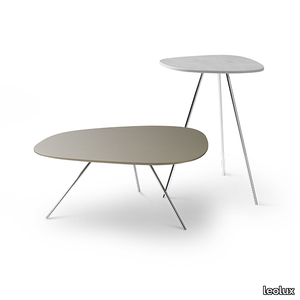
leolux > Coffee table
With Liliom, design studio Beck Design has crafted a series of organically shaped tables in varying shapes and heights. They're as beautiful as they are practical – you can nest them for a tidier look. The ceramic or solid wood top gives the piece a natural accent, while a lacquered finish creates a colourful look.
ML10097 Egyptian Table
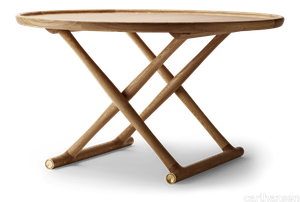
carlhansen > Coffee table
Mogens Lassen designed the ML10097 Egyptian Table after being inspired by folding stands found in Tutankhamun's tomb in 1922. The table was first shown at the Copenhagen Cabinetmakers' Guild Exhibition in 1940.
CH417 Tray Table
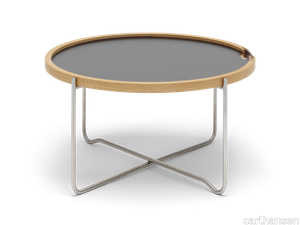
carlhansen > Coffee table
Hans J. Wegner’s CH417 tray table is a clear example of his ability to create functional and, at the same time, beautiful, unique furniture.
CH008 Coffee Table

carlhansen > Coffee table
The CH008 coffee table was designed by Hans J. Wegner in 1954. The understated and elegant three-legged design has since become one of his most popular pieces.
ML10097 Egyptian Table

carlhansen > Coffee table
Mogens Lassen designed the ML10097 Egyptian Table after being inspired by folding stands found in Tutankhamun's tomb in 1922. The table was first shown at the Copenhagen Cabinetmakers' Guild Exhibition in 1940.
Droplets Coffetable
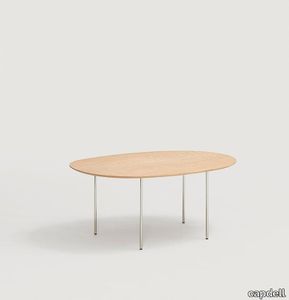
capdell > Coffee table
Dropplets Coffetable in height 53 cm. Metal legs in coated epoxi finishing. Beech veneer top in size 120 x 79 cm.
UPHOLSTERY
A wide range of Upholstery and materials provided by our suppliers to satisfy your needs.
AI services
Fringe Chatbot | Image Finder | Fringe Dall-e | Area Analyzer




